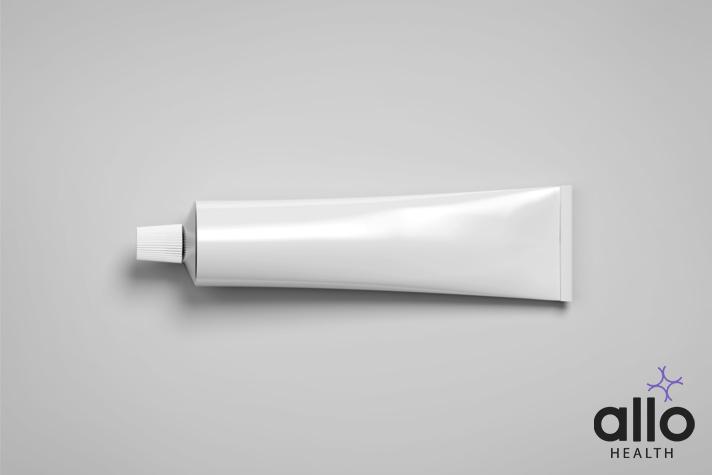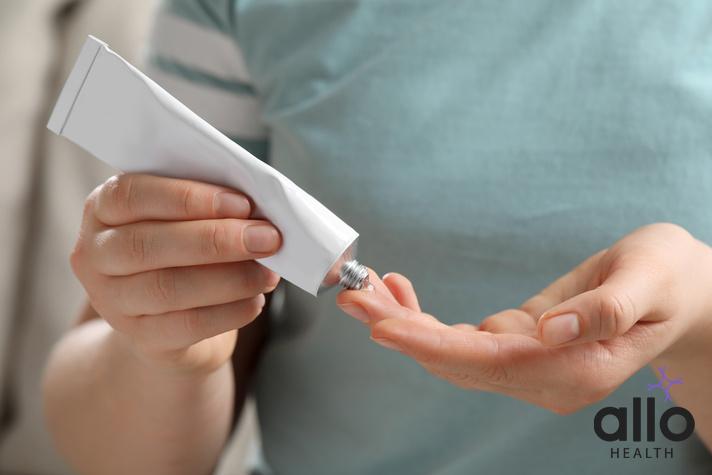Why Use Clotrimazole Cream on Penis?

Allo Health is dedicated to personalized well-being, offering support and trusted information tailored to individual health goals. The platform emphasizes human-generated content, led by a distinguished medical team of experts, including physicians and sexual health specialists. Their commitment to credibility involves rigorous fact-checking, authoritative research, and continuous updates to ensure accurate, up-to-date information. Allo Health's unique approach goes beyond conventional platforms, providing expert-led insights and a continuous commitment to excellence, with user feedback playing a crucial role in shaping the platform's authoritative voice.

Dr Sanina Mansoor holds MBBS degree from Yenepoya university,Mangalore.She has 8 years of experience working as a medical officer at various health centres and medical colleges.
Why This Was Upated?
Our experts continually monitor the health and wellness space, and we update our articles when new information became available.
Updated on 15 April, 2024
- Article was updated as part of our commitment to diversity, equity, and inclusion.

"The following blog article may discuss medical treatments and interventions. However, it is important to note that the information provided is for general educational purposes only and should not be considered as a substitute for professional medical advice, diagnosis, or treatment. Always seek the guidance of a qualified healthcare professional for personalized medical advice.
Book consultation
Medical treatments are complex and should be tailored to individual circumstances. The information presented in this blog may not be applicable to everyone, as each person's medical condition, history, and needs are unique. Only a qualified healthcare professional can evaluate your specific medical situation, consider relevant factors, and provide appropriate recommendations for diagnosis, treatment options, and monitoring.
It is crucial to note that self-diagnosis, self-medication, or relying solely on the information provided in this blog for treatment decisions can have serious health consequences. "
Clotrimazole cream is a type of antifungal medication, primarily used to treat fungal infections on the skin, including those on the penis. It’s effective against a range of fungal skin infections, notably caused by the fungus, Candida albicans. In this article we’ll get to know more about applying clotrimazole cream on penis, it’s risks and considerations.
What is Clotrimazole Cream?
- Clotrimazole cream is an antifungal medication used to treat various fungal skin infections, including those caused by the fungus, Candida albicans. This topical treatment is specifically designed to combat symptoms of thrush, such as redness, itching, and unpleasant smell, which are common in fungal infections like penile yeast infection.
- As an active ingredient in antifungal creams, clotrimazole works by inhibiting the growth and spread of fungal cells, effectively managing the infection. It’s important to note that while clotrimazole is effective against fungal infections, it should not be used for bacterial infections or conditions like genital warts without consulting a healthcare provider.
- Typically available as an external cream, clotrimazole can also be found in other forms such as a solution or lotion. The choice of form depends on the specific type of infection and the area affected. For instance, clotrimazole lotion might be more suitable for areas prone to sweat rash.
- Patients should be aware of potential side effects, including local irritation or allergic reactions. Although uncommon, any adverse effects should be immediately reported to a healthcare provider.
- Overall, clotrimazole cream is a widely used and effective antifungal medication, but it should always be used under the guidance of a healthcare provider to ensure proper treatment and avoid harmful effects.
What is Penile Yeast Infection?
A penile yeast infection, also known as candidiasis of the penis, is a fungal infection that affects the genital area in men. It’s caused by the fungus Candida albicans, which is the same type of yeast that causes vaginal yeast infections in women. This fungus is normally present in small amounts on the skin and inside the body, but certain conditions can cause it to overgrow, leading to an infection.
Symptoms of Penile Yeast Infection
The symptoms of a penile yeast infection can include:
- Redness or a red rash on the penis.
- Itching or burning sensation on the penile skin.
- White, clumpy discharge, similar to cottage cheese.
- Unpleasant odor.
- Pain or discomfort during sexual intercourse.
- Swelling around the head of the penis.
Causes
Factors that can increase the risk of developing a penile yeast infection include:
- Unprotected sexual intercourse with a partner who has a vaginal yeast infection.
- Poor hygiene, which can create a warm, moist environment ideal for yeast growth.
- Use of antibiotics, which can disrupt the natural balance of microorganisms on the skin and in the body.
- Weakened immune system, due to conditions like diabetes or HIV/AIDS, which can make it harder for the body to control yeast growth.
- Use of certain products like soaps or lubricants that may irritate the penile skin.
Treatment
Treatment for a penile yeast infection usually involves antifungal creams or medications. Clotrimazole cream is a common topical antifungal treatment. In some cases, oral antifungal medications may be prescribed. It’s important to complete the full course of treatment even if symptoms improve to ensure the infection is fully cleared.
As always, if you suspect you have a penile yeast infection, it’s important to seek medical advice for an accurate diagnosis and appropriate treatment.
Why Use Clotrimazole Cream for Penile Infection?

Using clotrimazole cream for a penile yeast infection is beneficial because it effectively targets the underlying cause of the infection, which is often the fungus Candida albicans. Here’s why clotrimazole cream is a recommended treatment:
- Antifungal Medication: Clotrimazole is a potent antifungal medication, specifically designed to combat fungal skin infections, including those caused by Candida.
- Targeted Action: The active ingredients in clotrimazole directly address the fungal infection, reducing symptoms like itching, redness, and unpleasant smell associated with penile yeast infections.
- Minimizing Spread of Infection: Regular application of clotrimazole can help prevent the spread of infection to partners, especially in cases related to sexually transmitted infections like vaginal thrush.
- Treating External Symptoms: Clotrimazole cream is excellent for treating external symptoms of fungal infections. It’s a topical treatment that works on the surface of the skin, reducing discomfort and promoting healing.
- Versatility: Besides the cream, clotrimazole is available in other forms such as clotrimazole solution and lotion, offering different options for application based on individual needs and the type of infection.
- Minimal Systemic Absorption: Clotrimazole has a good safety profile with minimal systemic absorption, which means it works primarily where applied, reducing the risk of widespread side effects.
- Ease of Use: Clotrimazole cream is easy to apply, making it a convenient option for treating penile yeast infections.
- Reducing Chronic Symptoms: For recurring or chronic symptoms of yeast infection, clotrimazole can be an effective part of a longer-term treatment plan, as advised by a healthcare provider.
- Expert Advice and Medical Guidance: Using clotrimazole under the guidance of a healthcare provider ensures the treatment is appropriate for the type of infection and helps in differentiating it from other conditions like bacterial skin infections or allergic reactions.
By targeting the fungus Candida albicans and providing relief from common symptoms, clotrimazole cream is a widely recommended and effective option for treating penile yeast infections.
Risks and Considerations

When using clotrimazole cream for treating a penile yeast infection, it’s important to consider various risks and factors:
- Allergic Reaction: Some individuals may have an allergic reaction to clotrimazole or its inactive ingredients, leading to symptoms like rash, itching, or swelling.
- Misdiagnosis: Not all symptoms of discomfort or irritation in the genital area are due to a yeast infection. Conditions like bacterial skin infections, genital warts, or other types of infection can exhibit similar symptoms. Proper diagnosis by a healthcare provider is crucial.
- Overuse or Incorrect Use: Misusing clotrimazole cream, either by overuse or incorrect application, can lead to decreased effectiveness or increased risk of side effects. It’s important to follow the prescribed usage.
- Systemic Absorption Risks: While rare, there is a potential for systemic absorption, especially if used over large body areas or for extended periods. This could lead to broader side effects beyond the local area of application.
- Spread of Infection: In cases of sexually transmitted fungal infections like vaginal thrush, partners may also require treatment. Without treating both partners, the infection can be passed back and forth.
- Chronic Symptoms: For chronic or recurrent yeast infections, clotrimazole cream may not be sufficient, and other treatments or longer-term use may be necessary. This should be done under medical supervision to prevent harmful effects.
- Unpleasant Smell and Discomfort: While clotrimazole can treat the infection, symptoms like an unpleasant smell or discomfort might persist for some time during the treatment.
- Resistant Strains: Overuse or incorrect use can lead to the development of resistant strains of fungus, making the infection harder to treat.
- Expert Advice and Medical Supervision: It’s vital to seek expert advice and use clotrimazole under medical supervision, especially for individuals with a history of allergic reactions or those taking multiple medications.
While clotrimazole cream is an effective antifungal medication for treating penile yeast infections caused by the fungus Candida albicans, its use must be carefully managed considering the above risks and considerations. Always seek guidance from a healthcare provider for the correct diagnosis and treatment plan.
Conclusion
Clotrimazole cream can be a safe and effective solution for treating penile yeast infections. However, it’s essential to use it under the guidance of a healthcare provider, considering potential drug interactions and adverse effects. Remember, proper diagnosis is key to effective treatment.
Most Asked Questions
-
How do I know if I should use clotrimazole cream on my penis?
If you notice signs like itching, redness, or an unpleasant smell around your genital area, you might have a fungal infection. Clotrimazole cream is often recommended for these symptoms. However, it’s best to talk to a healthcare provider first to make sure you need this treatment.
-
Can clotrimazole cream be used for other types of infections?
Clotrimazole cream is specifically designed to treat fungal infections, like those caused by Candida albicans. It’s not effective for bacterial infections or conditions like genital warts. If you’re unsure about the type of infection you have, it’s important to get expert advice.
-
Are there any side effects of using clotrimazole cream on my penis?
Most men don’t have serious problems when using clotrimazole cream. Some common side effects can include a mild burning sensation or irritation at the application site. If you experience severe reactions or symptoms don’t improve, contact your healthcare provider.
-
How long does it take for clotrimazole cream to work on penile yeast infections?
The time it takes for clotrimazole cream to work can vary. Generally, you might start seeing improvement in your symptoms within a few days. However, it’s crucial to continue the treatment for the full duration prescribed by your doctor, even if the symptoms seem to clear up early, to ensure the infection is completely treated.






































